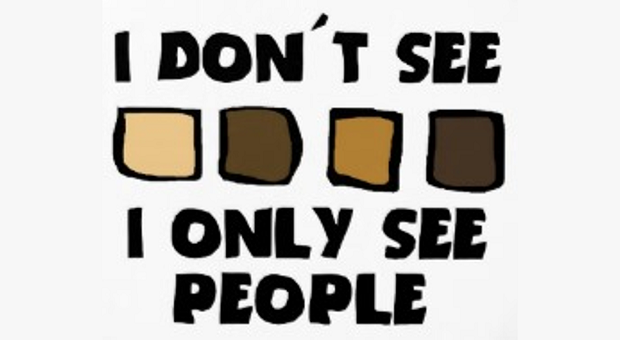
As a member of not one but two underrepresented groups (the somewhat curiously named, but veritable phenomena of living as a “double minority”), I have always felt unease regarding the use of the term “colorblind.”
It was and continues to be an expression used to denote fairness, equal access, tolerance, and progress. How many times have you heard someone in your professional or personal circles say that they are “colorblind” or “don’t see color?” Or that “color doesn’t matter” to them? On the surface, these statements seem innocuous. And in a society where much history has been marked with painful recollections of racial tension, injustice, and discrimination, wounds that in many cases are still tender, it is easy to see why the term prevails. Talking about color isn’t easy, and so, in many cases, we don’t.
Instead, we skirt around the topic of color, troubled with its history but also failing to remain impervious from its grasp. We struggle, choosing to discuss every diversity dimension except color. We espouse multiculturalism, diversity of thought, and equality, performing elaborate verbal Olympics that rival the striking table tennis matches in Rio.
But while colorblindness is often a euphemism for post-racial, its reception is typically anything but for those who have no choice but to recognize their race and color each day. To embrace colorblind ideology is also to ignore the rich tapestry of experiences, insights, and viewpoints that accompany color. No one would say that they “don’t see” an individual’s work experiences or education level. So why do we refuse to see those aspects of diversity that are not only unalterable, but primary to how we view, see, and experience our world? We should want to see color, because it is an attribute that informs how we relate to others, what (and why) we think, and how we work and play. Ignoring color, is, in fact, a symptom of privilege. People of color do not have the option to be “blind” to their race. It is a social construct that cannot be easily be placed aside or disregarded, which is also why idioms such as “playing the race card” are so problematic. Each of us can only play with the cards we have been dealt.
It is even more bizarre to conclude that we can be “colorblind” in this day of Facebook, LinkedIn, Instagram, and the like. In this “selfie generation,” color is often the first (and hopefully not the last) detail that we see. And while we often still hear the antiquated advice of not including photos with professional applications and resumes, the sneaky claim of colorblindness has lulled us into a false pretense of a world where color has no adverse influence on opportunities for advancement and progression.
Just last month, U.S. House Speaker Paul Ryan demonstrated how painstakingly easy it is to accept the absence of color as normal in his now notorious #SpeakerSelfie at Capitol Hill, despite claims of the 114th Congress being the “most diverse ever” in January 2015. Ryan’s post initially sparked debate over its apparent lack of diversity, markedly, the absence of any interns of color, later driving a prompt response from the Democratic congressional office with a similar photo of interns spanning a variety of different ethnicities. Ryan’s post opened the door to discussions regarding diversity in the workplace, and also led to criticisms of unpaid internships, which systematically disadvantage students of color and those from lower socioeconomic backgrounds. Students from these groups often do not have access to the resources and support system necessary to forgo a paycheck (albeit small) for experience. And so starts the cycle – students don’t intern because they cannot afford to do so, but are looked over for opportunities that require internship experience. And how does one go about obtaining experience without experience? It is a conundrum known to many a university student.
The selection processes in our schools and workplaces are often touted as “colorblind,” and they should be, in terms of using color as a bias. What we should not ignore, however, are the disparities that continue to persist due to systemic racism and bias; nor should we ignore the benefits of diversity.
There is a cost to colorblindness. When we ignore color, we also often ignore opportunities for harnessing the competitive advantage of our differences, and opportunities to learn from our own unconscious biases. In the case of the interns on the Hill, a recruitment strategy that focused on the source of interns (schools, professional organizations, a variety of geographical locations) could have supplemented traditional recruiting efforts while also ensuring a diverse candidate pool.
In the end, we all see color. What we attribute to color largely impacts whether what we “see” is beneficial or detrimental. It is both impractical and unbeneficial to ignore this aspect of diversity. Instead of eliminating color from the equation, we should recognize that there is a benefit in sharing our experiences and learning from the experiences of others – and in having the courage to acknowledge the differences in our “selfies”.
If you are interested in learning more about colorblindness and an alternative, take a look at this TedTalk from Mellody Hobson, president of Ariel Investments.


















